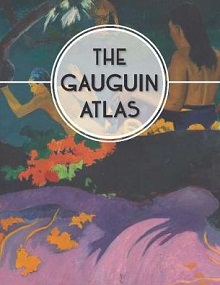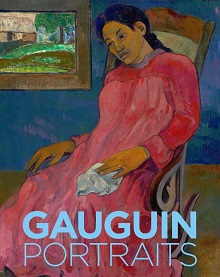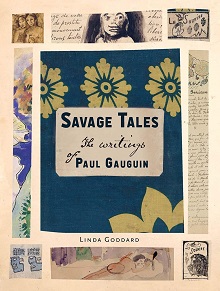Gauguin: Three Views | Fine Arts, Jan. 2020
Both readable and well illustrated, this is for all who delight in biographies, whether art history buffs or general readers; not only a fine complement to the exhibition for visitors, but also for art historians, art history students, and engaged general readers
 Denekamp, Nienke. The Gauguin Atlas. Yale Univ. Oct. 2019. 180p. ISBN 9780300237269. $22.50. FINE ARTS
Denekamp, Nienke. The Gauguin Atlas. Yale Univ. Oct. 2019. 180p. ISBN 9780300237269. $22.50. FINE ARTS
From Arles, France, to New Zealand, Denekamp ( The Vincent van Gogh Atlas ) takes readers on a chronological and geographical tour of the influences in postimpressionist artist Paul Gauguin’s life and works. Owing to van Gogh’s influence in Arles, Gauguin started painting portraits again, experimented with van Gogh’s garish colors, became more interested in Japanese woodcuts, and tried his fellow artist’s subject matter. In New Zealand, while waiting ten days for his delayed return ship to Tahiti, Gauguin visited the Auckland Institute and Museum, where he saw the authentic Polynesian art he unsuccessfully sought in Tahiti. Gauguin abandoned his family, ended relationships and promising careers, all for his art. In the 1940s, those who remembered him said, “He was only nice when he needed something from you!” The book’s matte finish paper preserves the look of the vintage postcards, photographs, and maps, giving readers a feeling for the time. The translation work is excellent; one does not notice that the original book is in Dutch. Includes brief bibliography and Gauguin family tree.
VERDICT Both readable and well illustrated, this is for all who delight in biographies, whether art history buffs or general readers.—Nancy J. Mactague, formerly Aurora Univ. Lib., IL
 Gauguin: Portraits. Yale Univ. Jun. 2019. 272p. ed. by Cornelia Homburg & Christopher Riopelle. ISBN 9780300242737. $40. FINE ARTS
Gauguin: Portraits. Yale Univ. Jun. 2019. 272p. ed. by Cornelia Homburg & Christopher Riopelle. ISBN 9780300242737. $40. FINE ARTS
The authors, published art historians and curators, use Gauguin’s portraiture to show the late 19th-century origins of modern art, what portraiture meant for Gauguin, how he expanded the parameters of portraiture, and how his multimedia approach furthered his artistic expression and allowed him to capture the essence of his individual sitters. Through his manuscripts and correspondence, readers hear Gauguin talk about the subjects of his portraits, including himself, his family, Tahitians, Bretons, contemporary artists such as van Gogh, other friends, their mistresses, and notables of his day. The relatively freestanding chapters are tied together by the theme of Gauguin’s use of his portraits to represent his alter egos as symbolist, savage, savior, creator, martyr, and an avant-gardist suffering for his art. He portrayed himself as Christ, Buffalo Bill, a Native American, and a peasant to self-promote, self-mythologize, and self-aggrandize. Lavishly illustrated with numerous full-page images, this exhibition catalog is thoroughly researched, each chapter containing endnotes. Also includes a list of illustrations, a bibliography, and index.
VERDICT Written in a straightforward style, this book is not only a fine complement to the exhibition for visitors, but also for art historians, art history students, and engaged general readers.—Nancy J. Mactague, formerly Aurora Univ. Lib., IL
 Goddard, Linda. Savage Tales: The Writings of Paul Gauguin. Yale Univ. Sept. 2019. 208p. ISBN 9780300240597. $40. FINE ARTS
Goddard, Linda. Savage Tales: The Writings of Paul Gauguin. Yale Univ. Sept. 2019. 208p. ISBN 9780300240597. $40. FINE ARTS
Goddard (art history, Univ. of St. Andrews, Scotland) analyzes the prolific writing output of artist Paul Gauguin (1848–1903) in this volume that preserves the look of his journals, manuscripts, collages, pen-and-ink drawings, sketches, and watercolors. The artist, who eventually left France for (then) French Polynesia, built his public identity and sense of self through his writing, using conscious primitivism to identify with non-Western peoples and construct a naïve artist-writer, or “noble savage” persona. His writings are interpreted as a serious literary endeavor, an example of his creativity that ranges across media. Goddard also discusses the writings’ legacy, including the artist’s contemporaries and attitudes toward them today. Thoroughly researched and well illustrated, the book includes a list of principal manuscripts, newspapers, and editions; endnotes; a bibliography; and index.
VERDICT For art lovers curious about the inner workings of Gauguin’s psyche and a contemporary analysis of its impact on artists past and present.—Nancy J. Mactague, formerly Aurora Univ. Lib., IL
RELATED
ALREADY A SUBSCRIBER? LOG IN
We are currently offering this content for free. Sign up now to activate your personal profile, where you can save articles for future viewing









Add Comment :-
Comment Policy:
Comment should not be empty !!!